 Sharon had a professional seminar to attend in Pittsburgh, and once again I tagged along as the idle spouse.
Sharon had a professional seminar to attend in Pittsburgh, and once again I tagged along as the idle spouse.
Pittsburgh is a truly great city. In the early 90s I worked about 45 minutes northwest of Pittburgh at a nuclear power plant. I’d work long hours for 6 days a week, and on the 7th day I’d go explore Pittsburgh. I did this for several contracts, 5-7 weeks each, and learned that Pittsburgh really was the most underrated city in the country.
The entrance into the city across the Fort Pitt bridge (from the west) is unforgettable. Since the steel mills shut down, the city has cleaned up, and many years of public-private partnerships have resulted in a city humming with activities.
Monday
First up was a visit to the Heinz History Center. Sounds dull, I know, but they really did a great job. They had dedicated exhibits for “Pennsylvania’s Civil War”, the history of the Pittsburgh industrial boom, Andrew Carnegie, and the requisite corporate displays for Heinz and PPG (glass). I skipped the sports museum because two hours was enough and something had to give.

Walking through the “cultural district” (formerly red light district), I grabbed a slice of pizza at a joint and headed across the Allegheny River to the North Shore. The river is bridged by the Three Sisters, three identical bridges built in the 1920s and now named after Roberto Clemente, Andy Warhol and Rachel Carson. If you’re not impressed by anything else about Pittsburgh, they sure know how to name their bridges.
Meandering on the trail along the north shore of the Allegheny, I got a good look at PNC Park, where the Pittsburgh Pirates play. They had been in the post-season earlier in the month, and if they’d made it to the World Series we’d have been in the middle of it during this trip.

Farther along I passed Heinz Field, your basic football temple for rapid Steelers fans.
Finally I got to Carnegie Science Center, my last stop for the afternoon. Generally aimed at children, as most of these science museums are, the CSC has a particularly engaging and enlightening robotics exhibit, which one would expect since Pittsburgh’s Carnegie Mellon University is the recognized world leader in robotics engineering.
The CSC also had the requisite space-themed exhibits, an interesting bicycle exhibit (hipster swoon!) and lots of kiddie stuff. Oh, and there was an actual World War II submarine moored in the river, but I didn’t have time to take that tour.
Meeting back up with Sharon after her seminar, we headed over to the cozy Shadyside neighborhood for dinner. Well, actually it was for a stop at the Kawaii store, where Sharon tried not to hyperventilate. We had dinner at an upstairs joint called The Elbow Room (recommended by a cabbie!), which reminded us of Nye’s Polonaise in Minneapolis.
Tuesday
 The next morning was going to be mostly about the Carnegie Museum of Art. One of my memories of Pittsburgh from 20 years ago was of the brief time I spent in the CMOA, and so I knew I needed to set aside some time for it. But first I had to go check out a couple nearby electric vehicle (EV) charging station, including one run by a CMU group. The Electric Garage is a CMU-affiliated operation that supports EV interests, both by offering help with DIY conversions and by simply providing charging stations outside. The parking lot was jammed when I was there, and I pressed my nose up against the garage windows.
The next morning was going to be mostly about the Carnegie Museum of Art. One of my memories of Pittsburgh from 20 years ago was of the brief time I spent in the CMOA, and so I knew I needed to set aside some time for it. But first I had to go check out a couple nearby electric vehicle (EV) charging station, including one run by a CMU group. The Electric Garage is a CMU-affiliated operation that supports EV interests, both by offering help with DIY conversions and by simply providing charging stations outside. The parking lot was jammed when I was there, and I pressed my nose up against the garage windows.

On to the CMOA … As it turned out, I was only going to have an hour or so here before I needed to leave for the next thing, so I knew I’d be back later or the next morning. So I tackled half of the museum. Once again the Hall Of Architecture, with its ersatz antiquities, is absolutely mind boggling. In the biennial proper, the adjacent sculpture hall was memorable, filled with the gunmetal art of Pedro Reyes, the utopian photography series of Joel Sternfeld, and the cultural spelunking of the Bidoun Library.
 But I had to move on, as I had a date. I’m not sure how I came across it, but there exists a tour of downtown Pittsburgh that is conducted on Segways! Atlanta has one of these tourist operations as well, and I’ve had it on my todo list for a couple years, never seeming to get around to it. No time like the present! I bused and hoofed it to Station Square (south of downtown across the river), got the Segway operation training, and we were off! Our tour tour guide was fitted with a headset with mic, and the rest of with one-ear headphones, so she could lead the way talking in a normal voice and we could all hear her. She led us on what ended up being a 5-6 miles trek all over downtown, focusing mostly on the architecture of the city, which is pretty amazing because of the enormous amount of money that flowed through the city for over a century starting in the 1850s. We went across the Allegheny to the North Shore neighborhood (wish I’d planned for that the day earlier!), through the Gateway Park, and back south through downtown and Market Square to cross the Monongahela back to Station Square. Riding (driving, really) a Segway is certainly fun, but it is still somewhat tiring — your feet never really move off the platform so they start to hurt after a while. But we certainly were able to cover a lot of distance quickly when called for.
But I had to move on, as I had a date. I’m not sure how I came across it, but there exists a tour of downtown Pittsburgh that is conducted on Segways! Atlanta has one of these tourist operations as well, and I’ve had it on my todo list for a couple years, never seeming to get around to it. No time like the present! I bused and hoofed it to Station Square (south of downtown across the river), got the Segway operation training, and we were off! Our tour tour guide was fitted with a headset with mic, and the rest of with one-ear headphones, so she could lead the way talking in a normal voice and we could all hear her. She led us on what ended up being a 5-6 miles trek all over downtown, focusing mostly on the architecture of the city, which is pretty amazing because of the enormous amount of money that flowed through the city for over a century starting in the 1850s. We went across the Allegheny to the North Shore neighborhood (wish I’d planned for that the day earlier!), through the Gateway Park, and back south through downtown and Market Square to cross the Monongahela back to Station Square. Riding (driving, really) a Segway is certainly fun, but it is still somewhat tiring — your feet never really move off the platform so they start to hurt after a while. But we certainly were able to cover a lot of distance quickly when called for.
 And back to the hotel to meetup with Sharon, but not before checking out a couple more EV charging stations for the national database.
And back to the hotel to meetup with Sharon, but not before checking out a couple more EV charging stations for the national database.
Up next, Sharon’s seminar organizers had arranged for us to tour the Cathedral of Learning, specifically the Nationality Rooms (see the wikipedia links for explanation). Each of these rooms was essentially a true museum piece, but one that students actually took classes in, and usually in topics wholy unrelated to the theme of the room. Quite surreal. The main floor of the Cathedral is given over to studying area, also surrela in that you have this Gothic church environment with … sloppy college student lounging aorund with their books and laptops. At some point the therapy dogs made their weekly appearance, and that pretty much busted up the place.
Sharon and I bolted a little early, as we had dinner reservations at a restaurant up the Duqesne Incline, overlooking the city. Having navigated the bus system for two days now, I was reasonably comfortable with it, but I knew it would just take too long for us to get to our destination. So I was willing to spring for a taxi … but it turns out that Pittsburgh isn’t really a “taxi town”. Early I had called two taxi companies to schedule, and both were like, uhhh, we’ll get there in 10 minutes or maybe an hour. OK, fine, we’ll take the bus.
Which turned into the one spectacular debacle of the trip. Basically during a frenzied and confused bus transfer in downtown, I got us on the wrong bus, but didn’t know for sure until it was too late. Like our inadvertant detour to Juvisy when we were in Paris for the first time, this one resulted in us standing on the side of a dark road VERY FAR from Pittsburgh, trying to figure out how to get back with one cell phone dead and the other one dying. In the end, we made it back to town but had to settle for a truly awful bar-food dinner at the “almost famous” Primanti Brothers, the only place still open at 9pm. Every trip has to have some collosal failure of logistics, I guess.
Wednesday
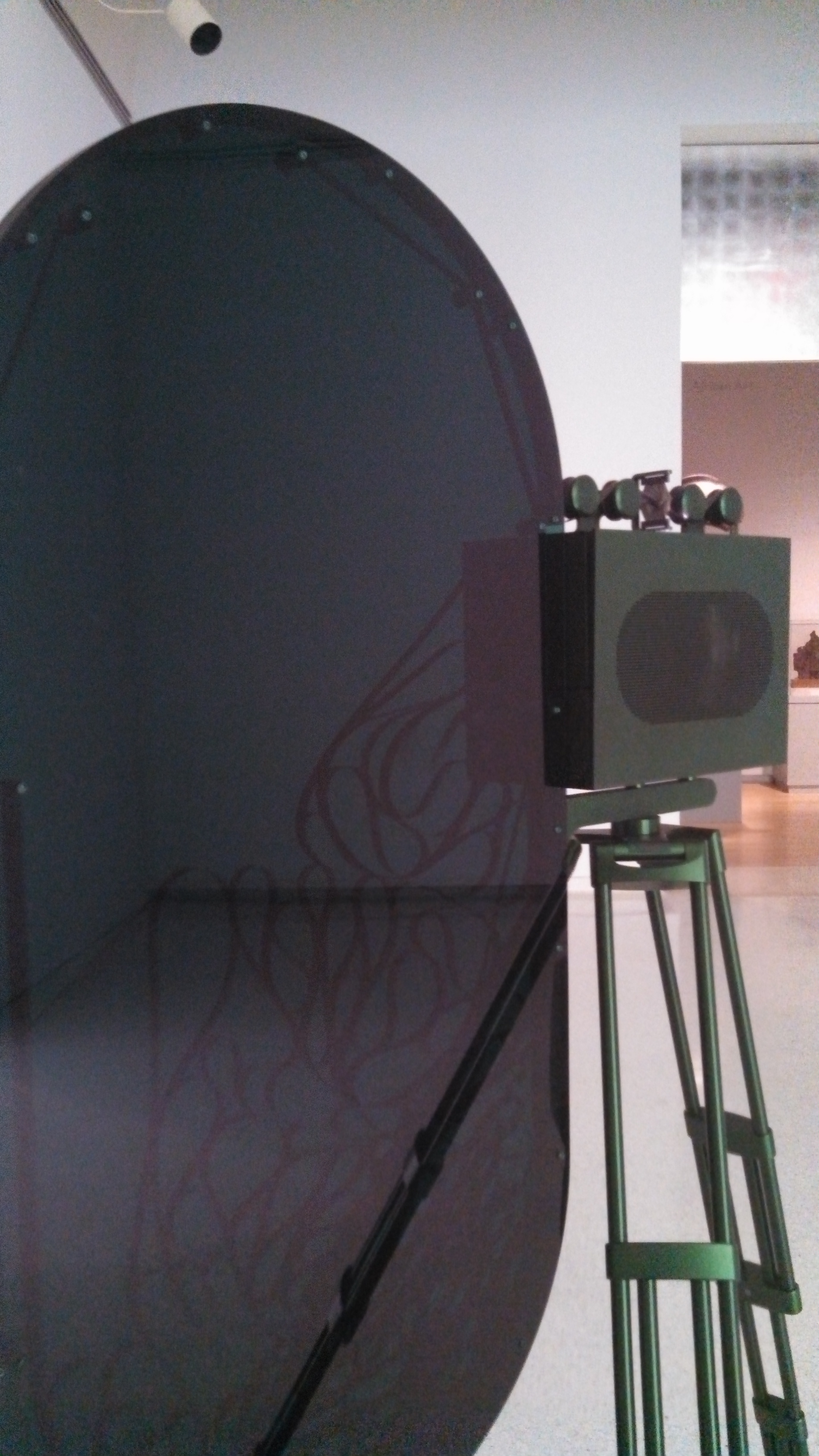 After she finished her seminar, Sharon joined me at the Carnegie Museum Of Art, where we had a good 90 minutes to do some more exploring. Sharon pretty much stuck to the Museum of Naturl History side, and I finished off the biennial. Memorable pieces included Rodney Graham’ projection.
After she finished her seminar, Sharon joined me at the Carnegie Museum Of Art, where we had a good 90 minutes to do some more exploring. Sharon pretty much stuck to the Museum of Naturl History side, and I finished off the biennial. Memorable pieces included Rodney Graham’ projection.
And that was it. We grabbed our suitcases from the hotel (nearby), caught the 28X bus back to the airport (busway! so cool!) and headed back home.
Regrets: not many. For a meal I had wanted to get out to the Bloomfield Bridge Tavern, a dive-y place that I frequented during my visits 20 years ago (I saw many bands there, including the mighty Tar). Obviously I have to be more careful with the bus system. I would have liked to get to the Frick Museum. Next time!
 Three years ago we moved to a new house, and it has great southern exposure, thanks to the location on a southeast corner lot. There are three roof segments facing south, with the biggest “upper” segment getting blasted by sunlight all day long — almost no shade whatsoever. The second biggest roof segment had a gigantic oak tree shading it. The third and smallest roof segment had few shading concerns, but the panels would have been visible from the front of the house. I really wanted to keep the front of the house “clean”, and I wasn’t going to be able to fit more than 3 or 4 panels on that little segment. So I was debating whether to use that front roof, but the upper segment would definitely host the lion’s share of the solar system.
Three years ago we moved to a new house, and it has great southern exposure, thanks to the location on a southeast corner lot. There are three roof segments facing south, with the biggest “upper” segment getting blasted by sunlight all day long — almost no shade whatsoever. The second biggest roof segment had a gigantic oak tree shading it. The third and smallest roof segment had few shading concerns, but the panels would have been visible from the front of the house. I really wanted to keep the front of the house “clean”, and I wasn’t going to be able to fit more than 3 or 4 panels on that little segment. So I was debating whether to use that front roof, but the upper segment would definitely host the lion’s share of the solar system.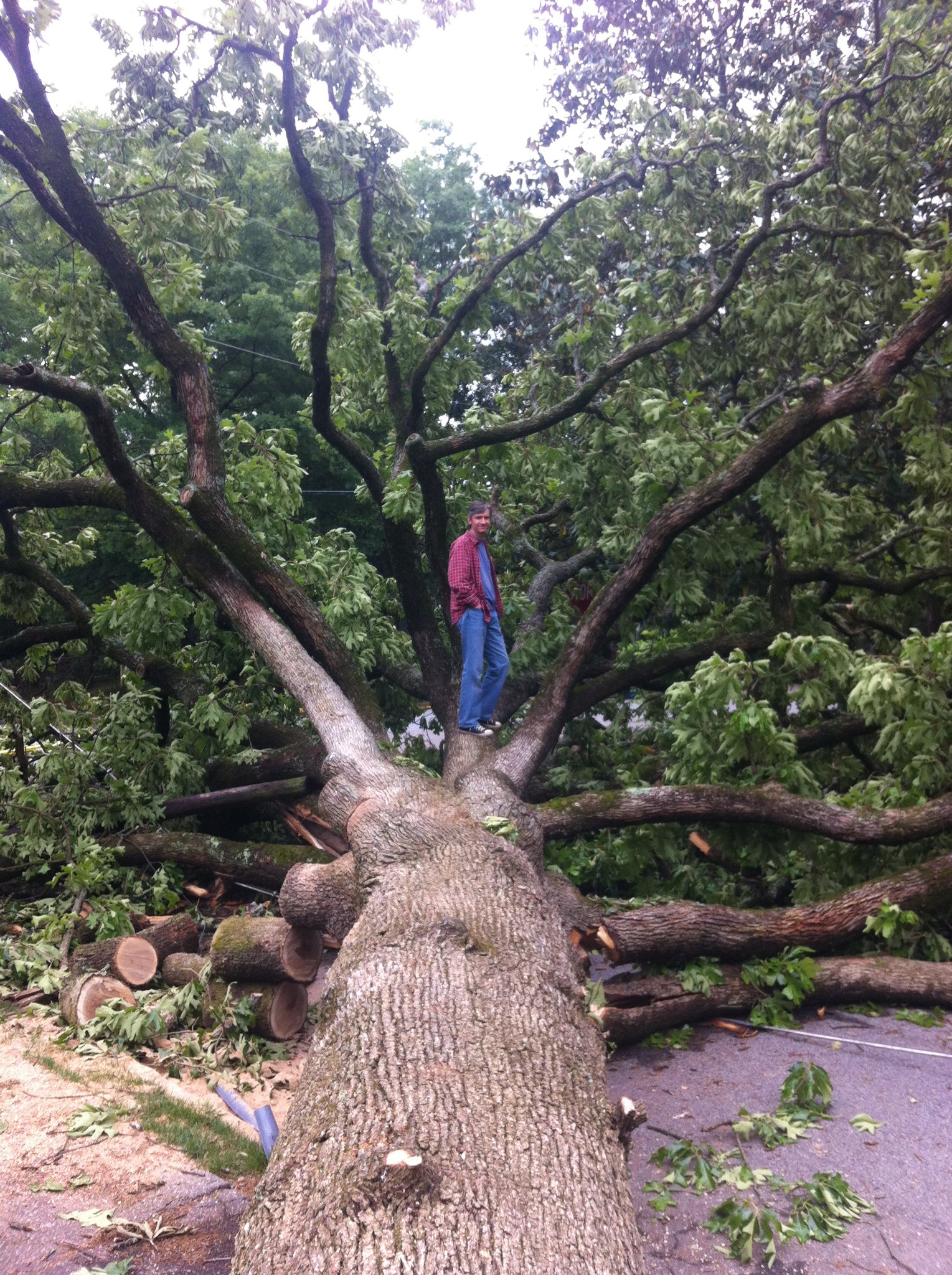 Then last spring the gigantic oak fell. Ouch. It took us a full three months to deal with that, but afterwards we now had a newly sunlit roof segment. That pretty much settled it — I wouldn’t have to bother with the little front roof segment, and so came up with a solar panel layout that fit 17 panels on the roof. And it would be pretty much maxed out with those 17 panels — any more panels would have to be located in places that got either morning or afternoon shade.
Then last spring the gigantic oak fell. Ouch. It took us a full three months to deal with that, but afterwards we now had a newly sunlit roof segment. That pretty much settled it — I wouldn’t have to bother with the little front roof segment, and so came up with a solar panel layout that fit 17 panels on the roof. And it would be pretty much maxed out with those 17 panels — any more panels would have to be located in places that got either morning or afternoon shade.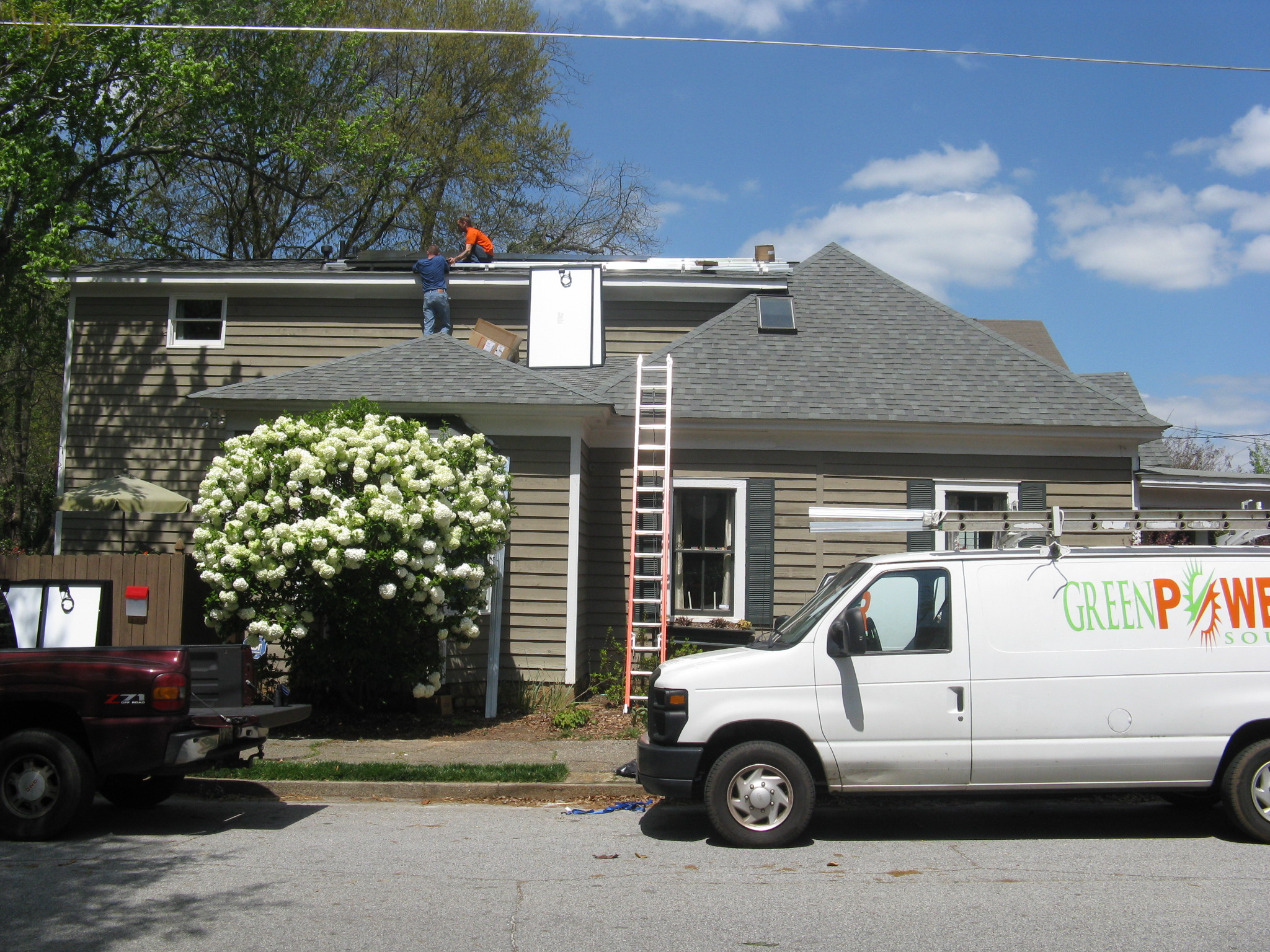 Finally, in February I was able to finish analyzing the competing bids from contractors and sign on the dotted line for the solar system install. Then it just became a waiting game, waiting for the panels and other parts to arrive from the manufacturers, and waiting for the weather and the installers’ schedule to line up.
Finally, in February I was able to finish analyzing the competing bids from contractors and sign on the dotted line for the solar system install. Then it just became a waiting game, waiting for the panels and other parts to arrive from the manufacturers, and waiting for the weather and the installers’ schedule to line up. On April 8th, the install finally started. The installers first tackled the “upper” array — I was having them put 11 panels on the roof of the house addition. This roof is high up and at a shallow angle, so actually not really visible from the ground, unless you stand way back (e.g. on the neighbor’s property). It ended up taking them most of the day to do that array.
On April 8th, the install finally started. The installers first tackled the “upper” array — I was having them put 11 panels on the roof of the house addition. This roof is high up and at a shallow angle, so actually not really visible from the ground, unless you stand way back (e.g. on the neighbor’s property). It ended up taking them most of the day to do that array.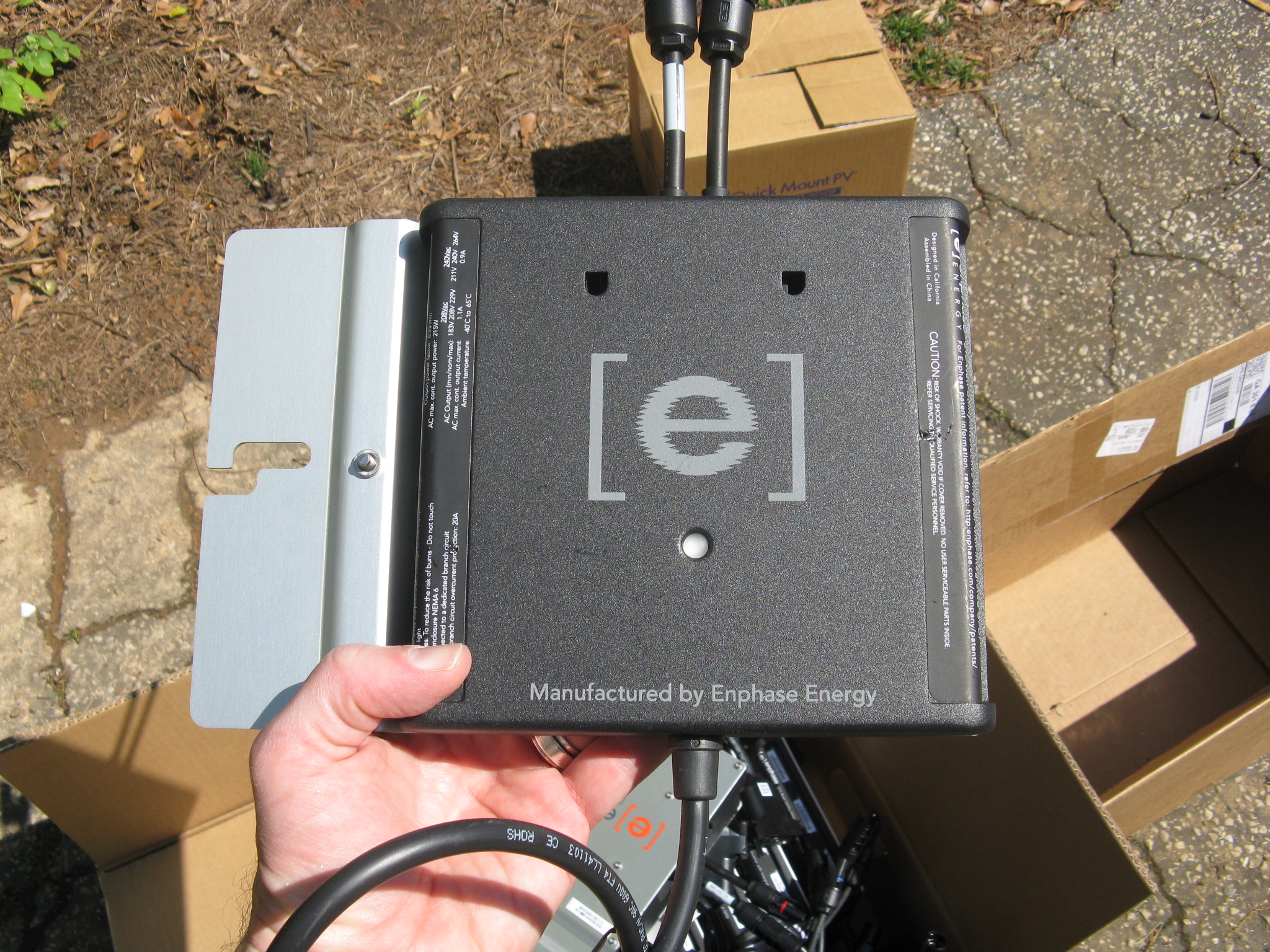 Each solar panel is about the size of a large coffee table (smaller than a sheet of plywood), and has a small “microinverter” mounted to the back to integrate the DC power coming out of the solar panel into the AC power system of the house.
Each solar panel is about the size of a large coffee table (smaller than a sheet of plywood), and has a small “microinverter” mounted to the back to integrate the DC power coming out of the solar panel into the AC power system of the house. The next day they resumed the construction of the side array. After that got completed, they worked on getting the wiring from the arrays over to the far side of the house.
The next day they resumed the construction of the side array. After that got completed, they worked on getting the wiring from the arrays over to the far side of the house.  For safety purposes, the wiring from solar power systems has to first go to a safety disconnect device mounted on the outside of the house, next to the power meter. From there the wiring then feeds into the breaker panel, typically inside the house. The power connects into the breaker panel just like any other circuit (e.g. to your clothes dryer), except the power is flowing backwards,
For safety purposes, the wiring from solar power systems has to first go to a safety disconnect device mounted on the outside of the house, next to the power meter. From there the wiring then feeds into the breaker panel, typically inside the house. The power connects into the breaker panel just like any other circuit (e.g. to your clothes dryer), except the power is flowing backwards, 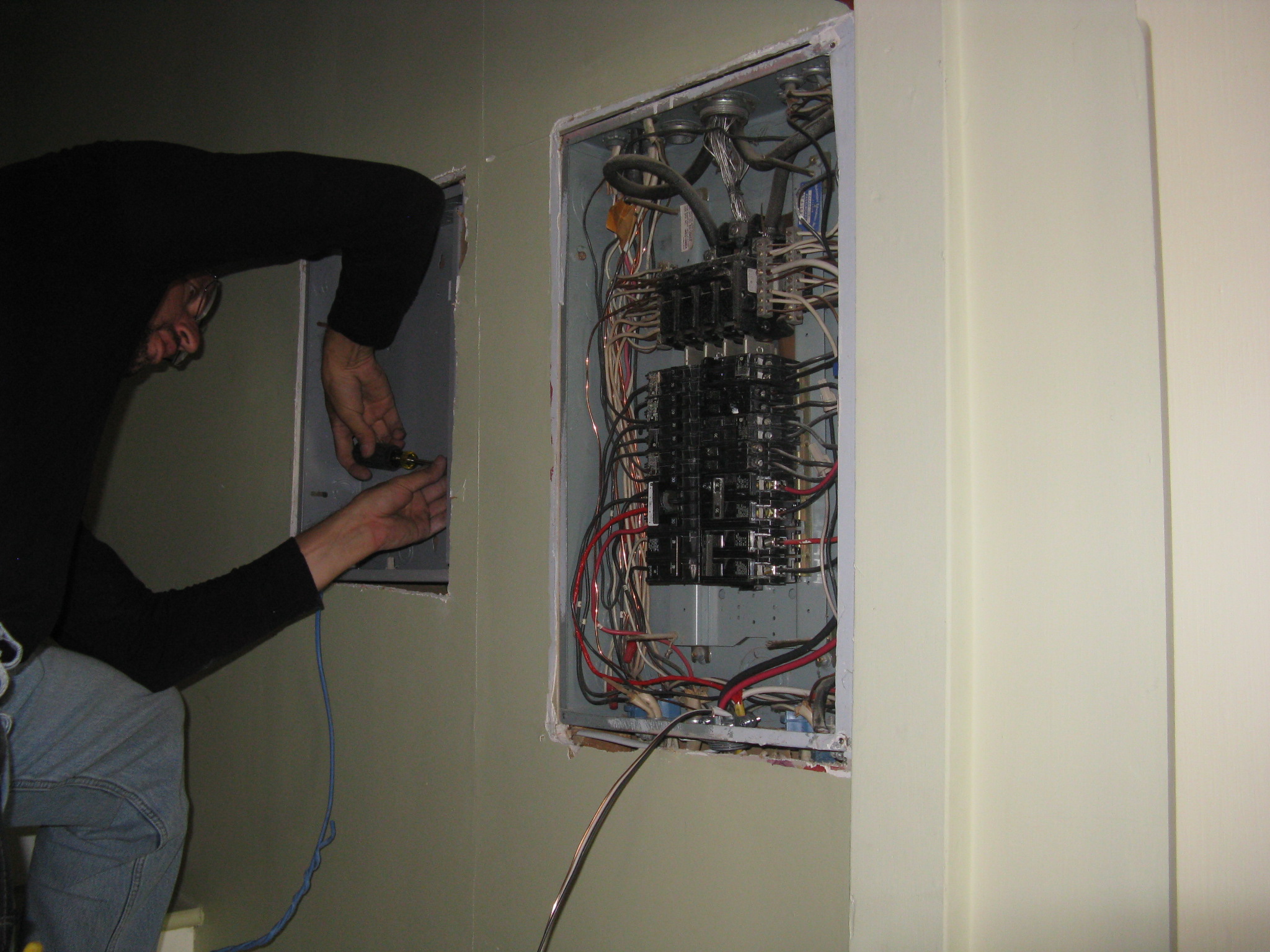 Finally, they installed the indoor controller electronics. This is just a little wall-mounted device, like a big thermostat, that provides status on the solar system. The indoor controller is not necessary for the system to function, rather it’s just a device that keeps track of the equipment, and provides a very cool web page for purposes of seeing more. However I didn’t want them to mount it on the wall, rather in the wall, inside a new box, because that stairwell was already cramped and I didn’t want this new thing crowding it further.
Finally, they installed the indoor controller electronics. This is just a little wall-mounted device, like a big thermostat, that provides status on the solar system. The indoor controller is not necessary for the system to function, rather it’s just a device that keeps track of the equipment, and provides a very cool web page for purposes of seeing more. However I didn’t want them to mount it on the wall, rather in the wall, inside a new box, because that stairwell was already cramped and I didn’t want this new thing crowding it further. And with that, at around 5:00pm that Wednesday afternoon, we flipped the switches on the system! One by one, the 17 panels came to life and started generating power. Within 15 minutes the system was generating about 1200 Watts, limited only by the fact that the sun was already setting.
And with that, at around 5:00pm that Wednesday afternoon, we flipped the switches on the system! One by one, the 17 panels came to life and started generating power. Within 15 minutes the system was generating about 1200 Watts, limited only by the fact that the sun was already setting.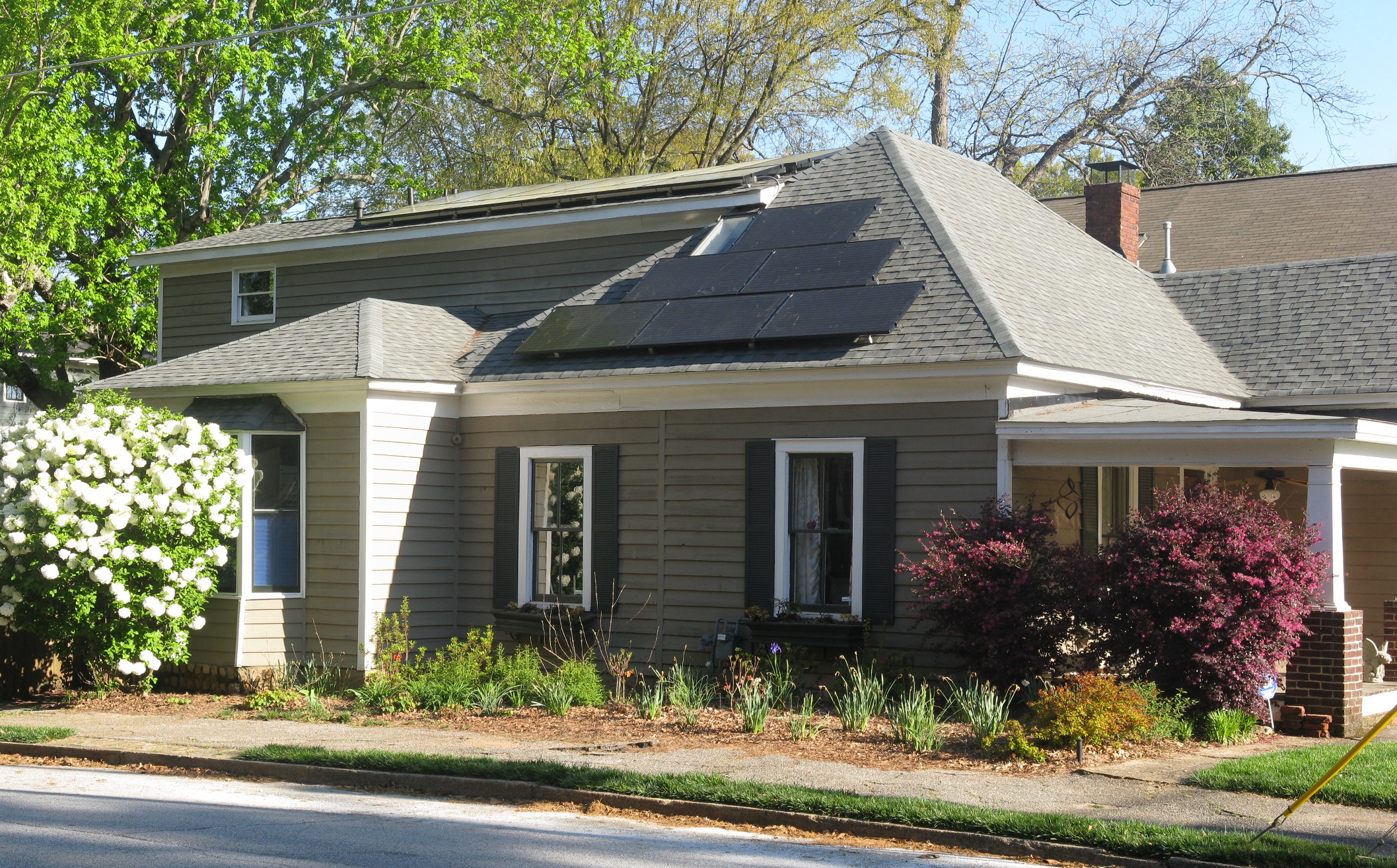 I like to say that as an electrical engineer, I live three years in the future. Engineers tend to be working very hard on things that are about to become mainstream. In 2010, I got serious about electric cars and bought one of the first production cars in the country, becoming a local advocate for that technology. Since then, hundreds of thousands of EVs have sold and the cars have become as mainstream as hybrids were a decade ago. So now I am moving on to the next thing, which is solar power. The financials aren’t a slam dunk, yet. But I believe that within three years they will be.
I like to say that as an electrical engineer, I live three years in the future. Engineers tend to be working very hard on things that are about to become mainstream. In 2010, I got serious about electric cars and bought one of the first production cars in the country, becoming a local advocate for that technology. Since then, hundreds of thousands of EVs have sold and the cars have become as mainstream as hybrids were a decade ago. So now I am moving on to the next thing, which is solar power. The financials aren’t a slam dunk, yet. But I believe that within three years they will be.





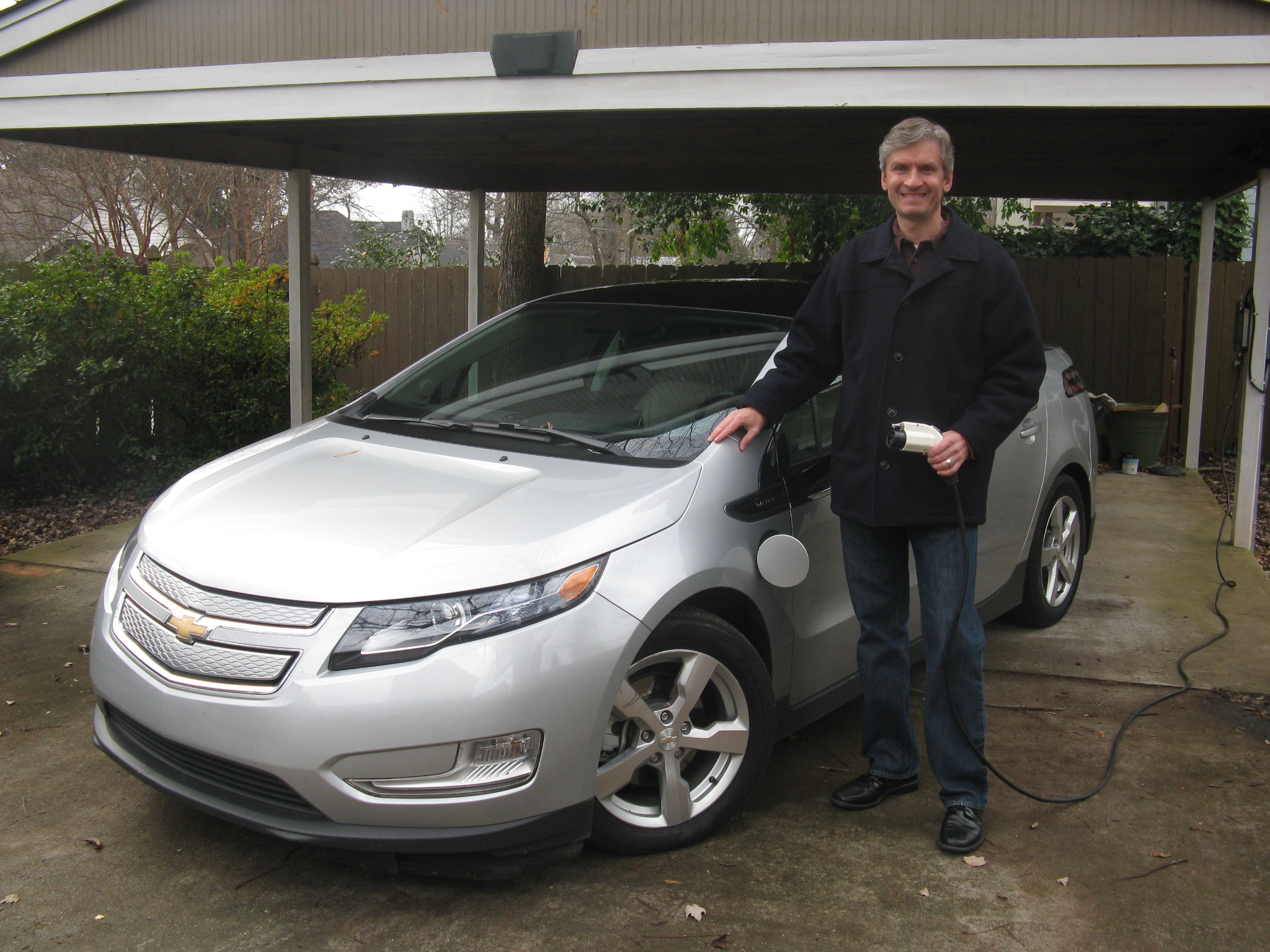 Three years ago today, I took delivery of my Chevy Volt. I had ordered it sight unseen, based only on research, and I ended up being the first Volt owner in the state of Georgia.
Three years ago today, I took delivery of my Chevy Volt. I had ordered it sight unseen, based only on research, and I ended up being the first Volt owner in the state of Georgia.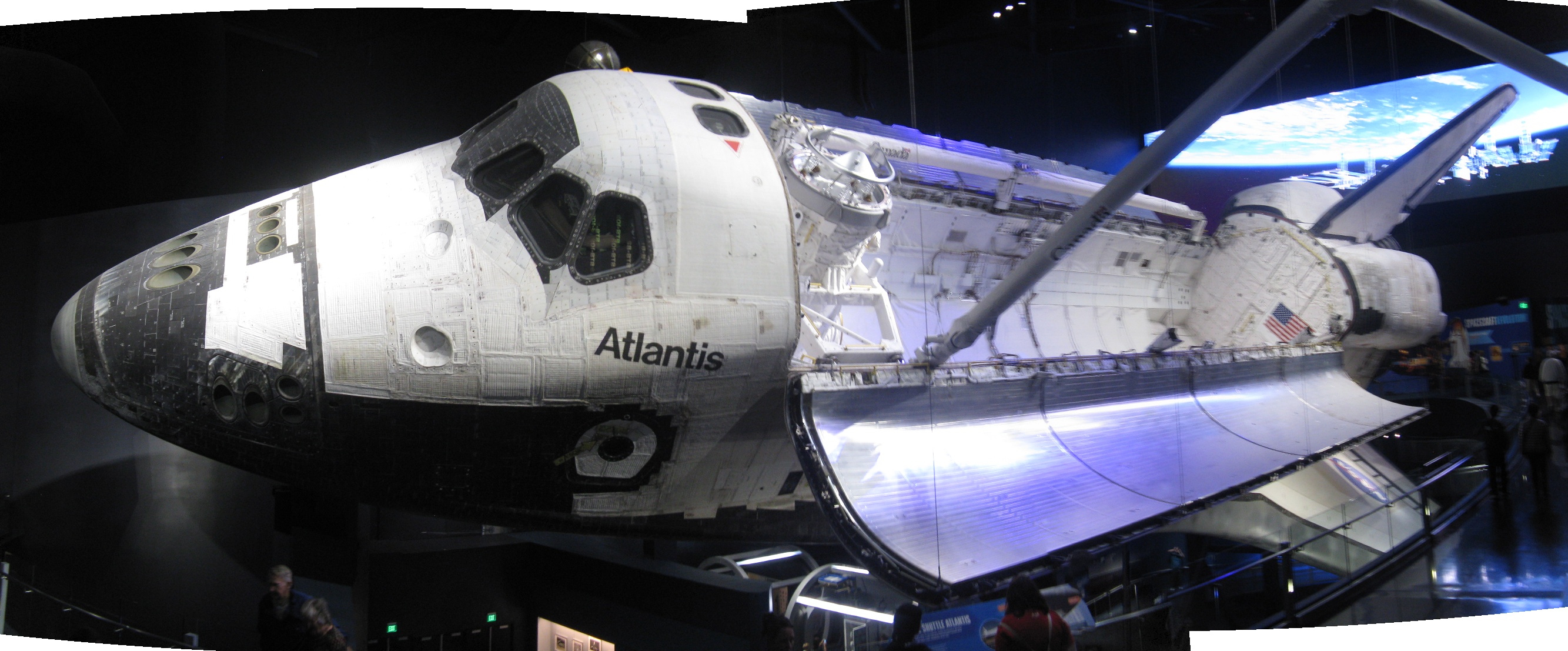

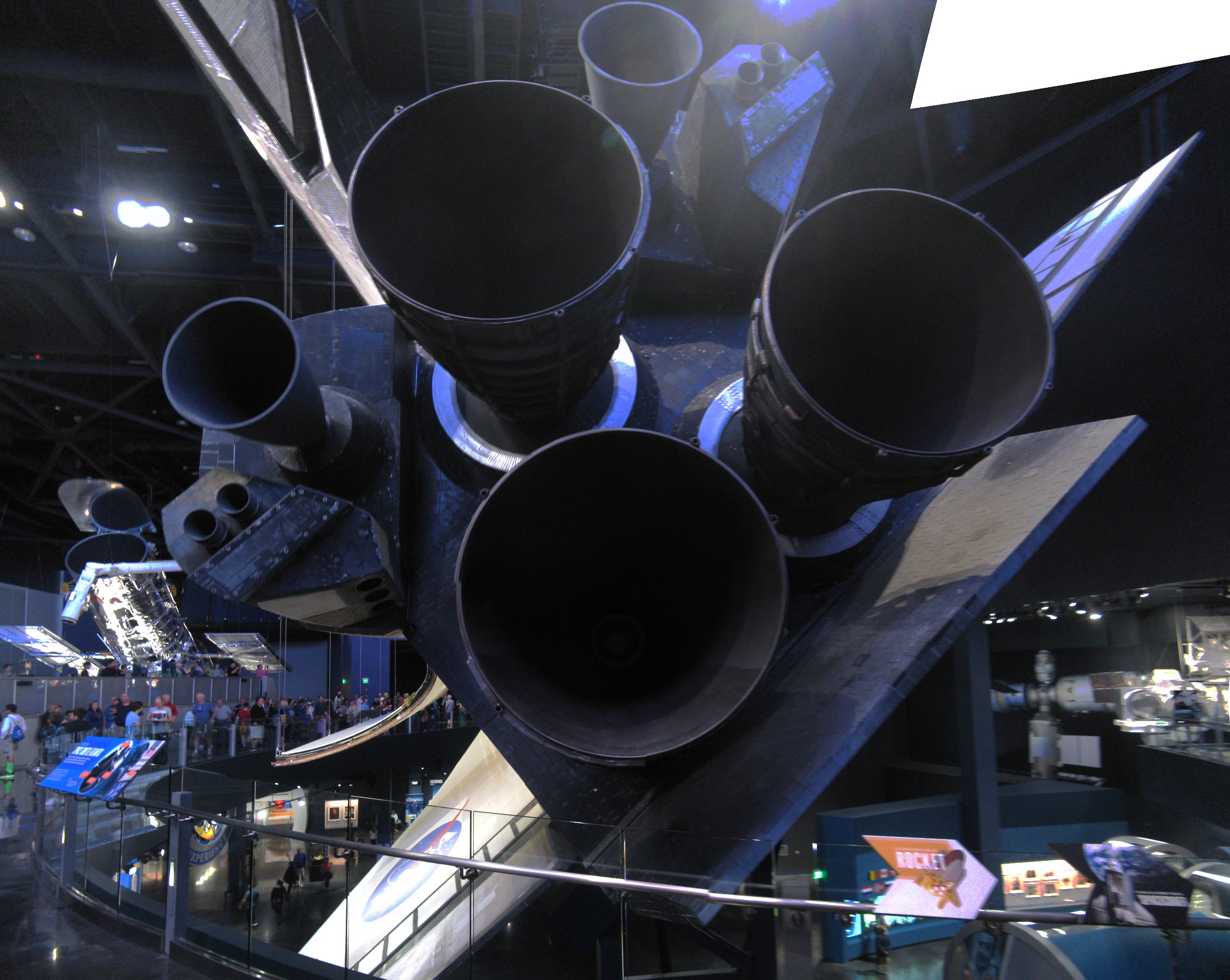

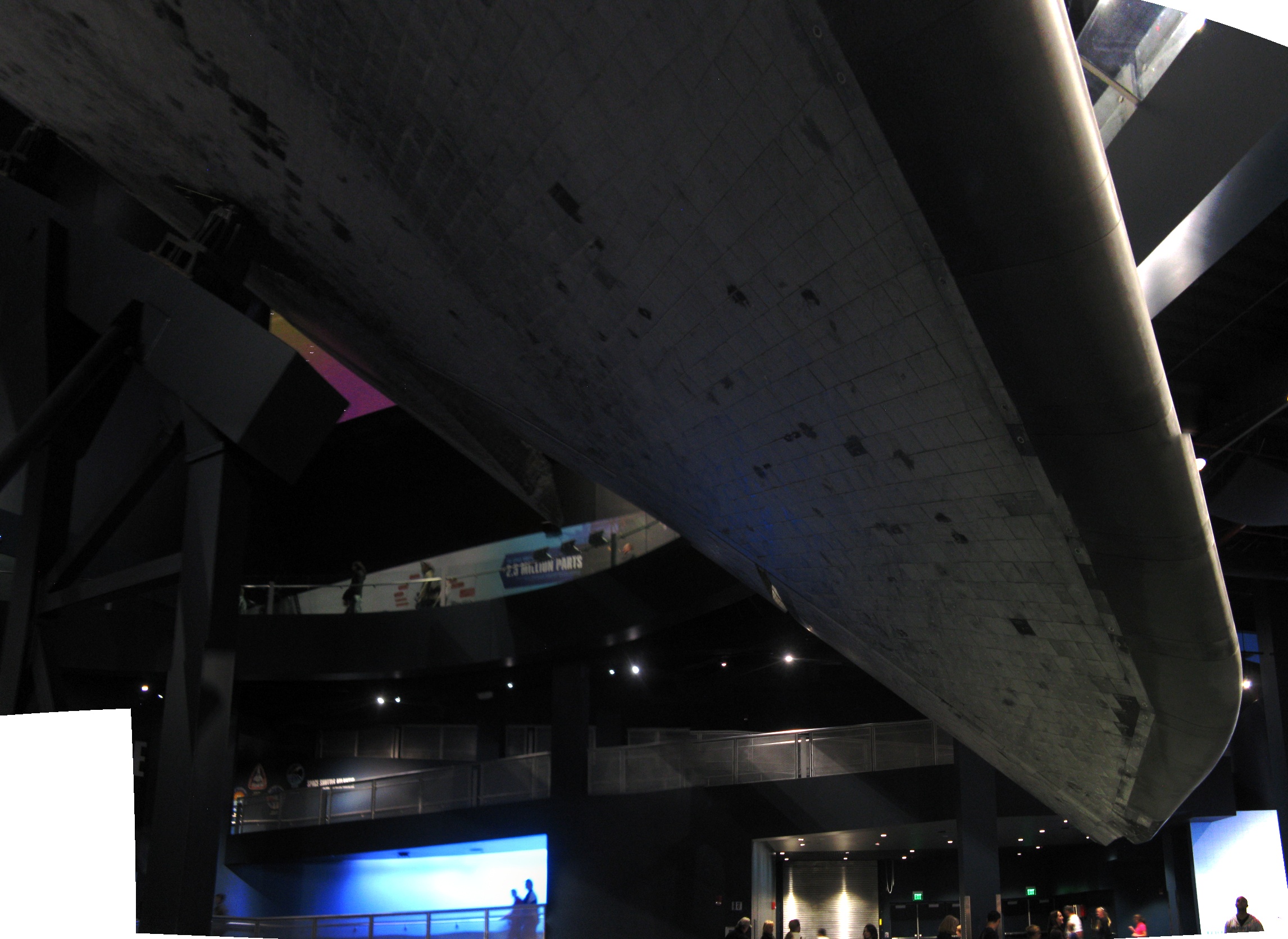
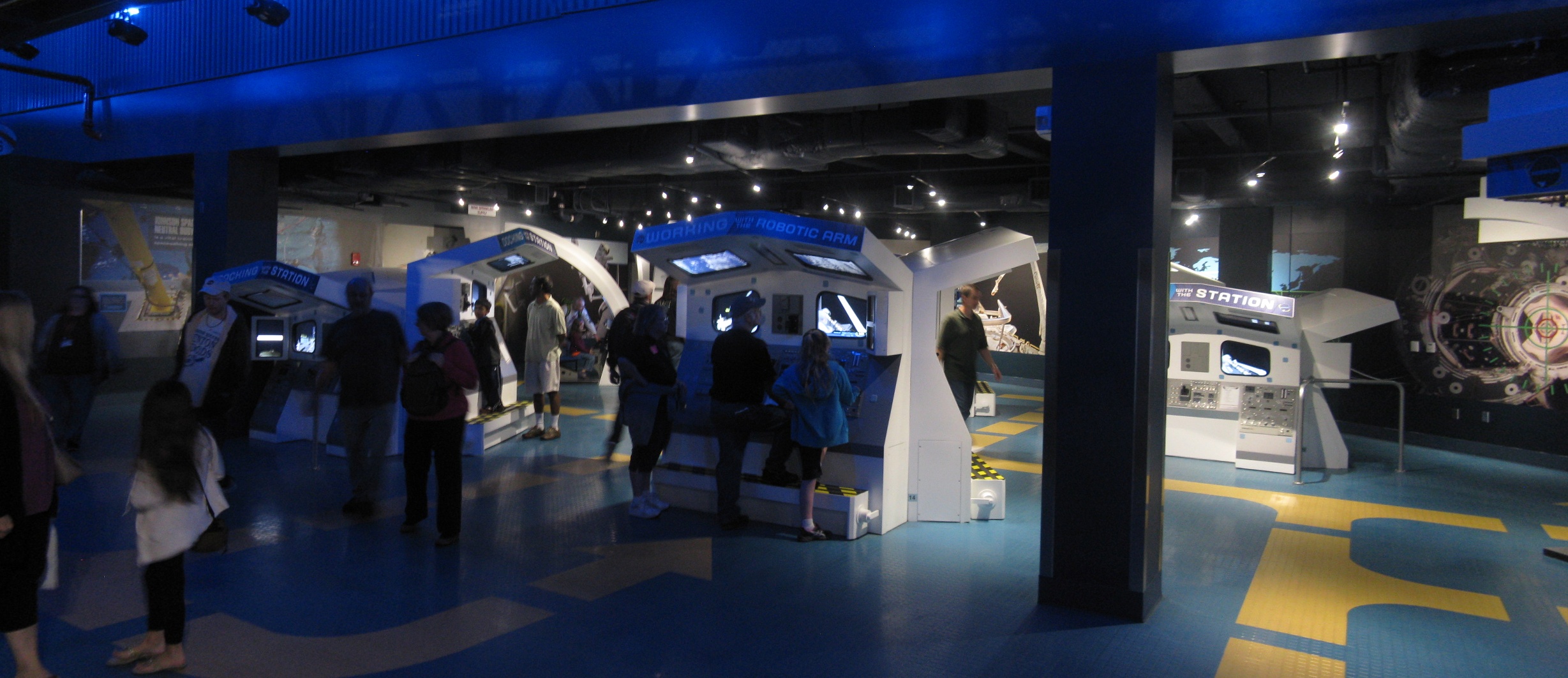
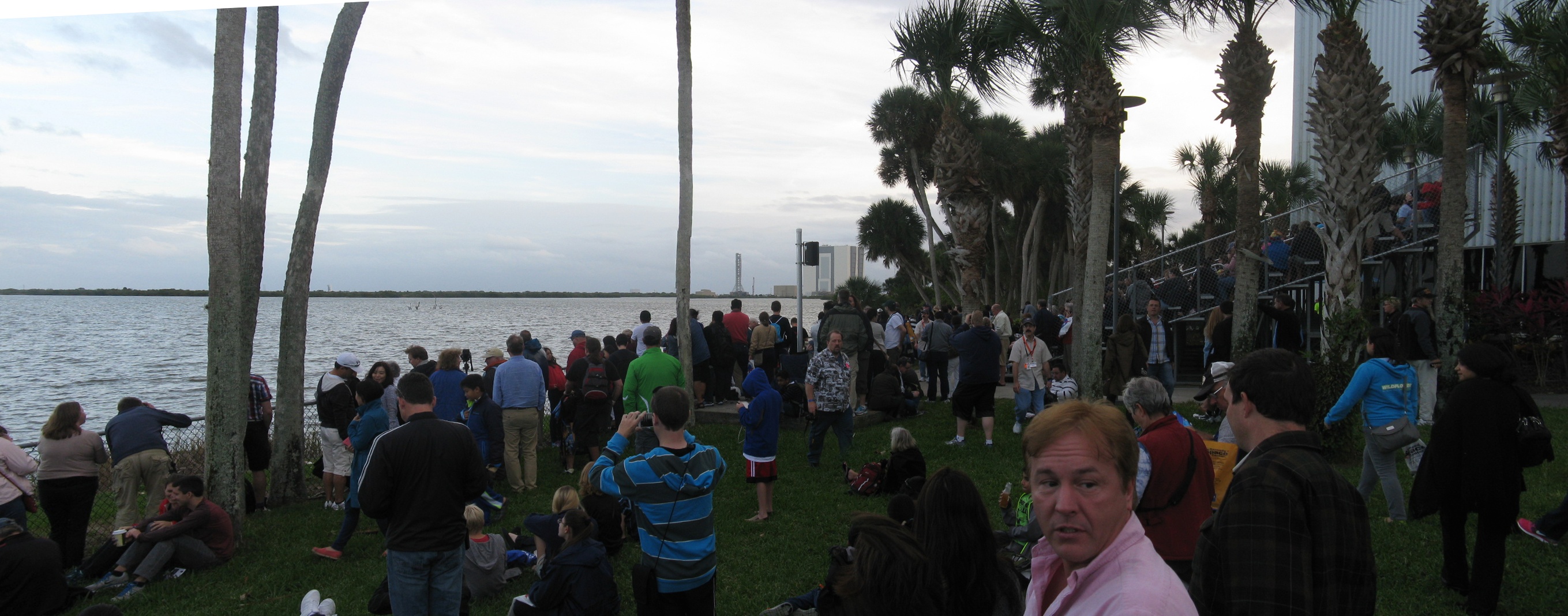


 Sharon had a professional seminar to attend in Pittsburgh, and once again I tagged along as the idle spouse.
Sharon had a professional seminar to attend in Pittsburgh, and once again I tagged along as the idle spouse.

 The next morning was going to be mostly about the Carnegie Museum of Art. One of my memories of Pittsburgh from 20 years ago was of the brief time I spent in the CMOA, and so I knew I needed to set aside some time for it. But first I had to go check out a couple nearby electric vehicle (EV) charging station, including one run by a CMU group. The Electric Garage is a CMU-affiliated operation that supports EV interests, both by offering help with DIY conversions and by simply providing charging stations outside. The parking lot was jammed when I was there, and I pressed my nose up against the garage windows.
The next morning was going to be mostly about the Carnegie Museum of Art. One of my memories of Pittsburgh from 20 years ago was of the brief time I spent in the CMOA, and so I knew I needed to set aside some time for it. But first I had to go check out a couple nearby electric vehicle (EV) charging station, including one run by a CMU group. The Electric Garage is a CMU-affiliated operation that supports EV interests, both by offering help with DIY conversions and by simply providing charging stations outside. The parking lot was jammed when I was there, and I pressed my nose up against the garage windows.
 But I had to move on, as I had a date. I’m not sure how I came across it, but there exists a tour of downtown Pittsburgh that is conducted on Segways! Atlanta has one of these tourist operations as well, and I’ve had it on my todo list for a couple years, never seeming to get around to it. No time like the present! I bused and hoofed it to Station Square (south of downtown across the river), got the Segway operation training, and we were off! Our tour tour guide was fitted with a headset with mic, and the rest of with one-ear headphones, so she could lead the way talking in a normal voice and we could all hear her. She led us on what ended up being a 5-6 miles trek all over downtown, focusing mostly on the architecture of the city, which is pretty amazing because of the enormous amount of money that flowed through the city for over a century starting in the 1850s. We went across the Allegheny to the North Shore neighborhood (wish I’d planned for that the day earlier!), through the Gateway Park, and back south through downtown and Market Square to cross the Monongahela back to Station Square. Riding (driving, really) a Segway is certainly fun, but it is still somewhat tiring — your feet never really move off the platform so they start to hurt after a while. But we certainly were able to cover a lot of distance quickly when called for.
But I had to move on, as I had a date. I’m not sure how I came across it, but there exists a tour of downtown Pittsburgh that is conducted on Segways! Atlanta has one of these tourist operations as well, and I’ve had it on my todo list for a couple years, never seeming to get around to it. No time like the present! I bused and hoofed it to Station Square (south of downtown across the river), got the Segway operation training, and we were off! Our tour tour guide was fitted with a headset with mic, and the rest of with one-ear headphones, so she could lead the way talking in a normal voice and we could all hear her. She led us on what ended up being a 5-6 miles trek all over downtown, focusing mostly on the architecture of the city, which is pretty amazing because of the enormous amount of money that flowed through the city for over a century starting in the 1850s. We went across the Allegheny to the North Shore neighborhood (wish I’d planned for that the day earlier!), through the Gateway Park, and back south through downtown and Market Square to cross the Monongahela back to Station Square. Riding (driving, really) a Segway is certainly fun, but it is still somewhat tiring — your feet never really move off the platform so they start to hurt after a while. But we certainly were able to cover a lot of distance quickly when called for. And back to the hotel to meetup with Sharon, but not before checking out a couple more EV charging stations for the
And back to the hotel to meetup with Sharon, but not before checking out a couple more EV charging stations for the  After she finished her seminar, Sharon joined me at the Carnegie Museum Of Art, where we had a good 90 minutes to do some more exploring. Sharon pretty much stuck to the Museum of Naturl History side, and I finished off the biennial. Memorable pieces included Rodney Graham’ projection.
After she finished her seminar, Sharon joined me at the Carnegie Museum Of Art, where we had a good 90 minutes to do some more exploring. Sharon pretty much stuck to the Museum of Naturl History side, and I finished off the biennial. Memorable pieces included Rodney Graham’ projection.








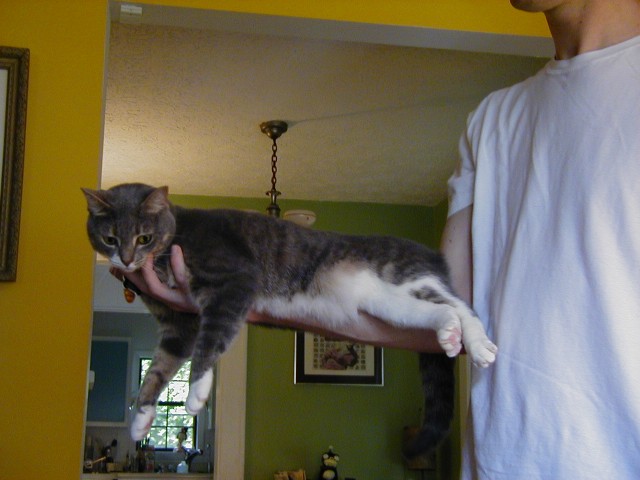




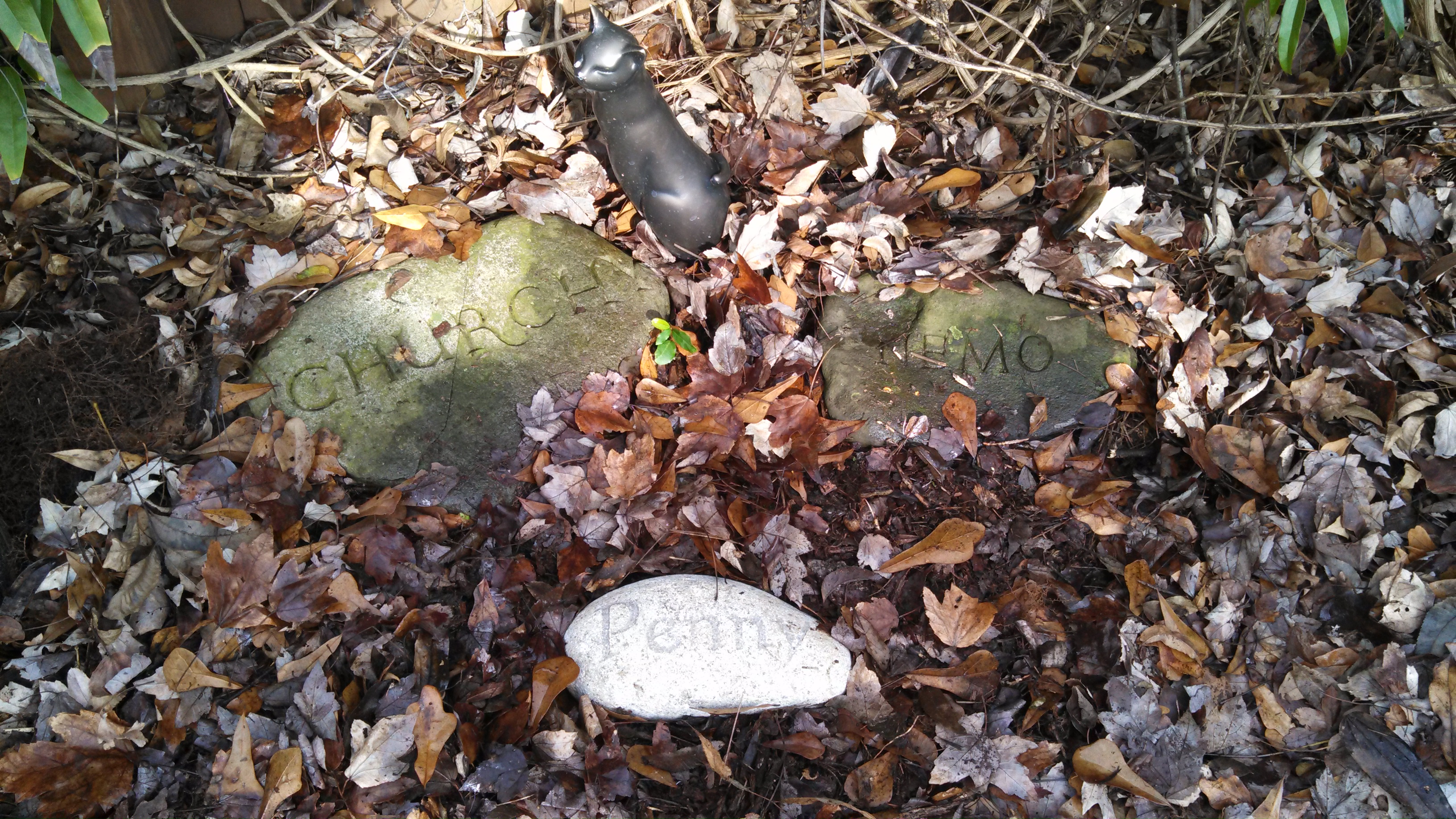

 It starts with my German uncle Andreas. A business owner based in Munich, recently he has been taking more time off from work, and perhaps enjoying a semi-retirement. This is the same uncle Andreas who took us on
It starts with my German uncle Andreas. A business owner based in Munich, recently he has been taking more time off from work, and perhaps enjoying a semi-retirement. This is the same uncle Andreas who took us on 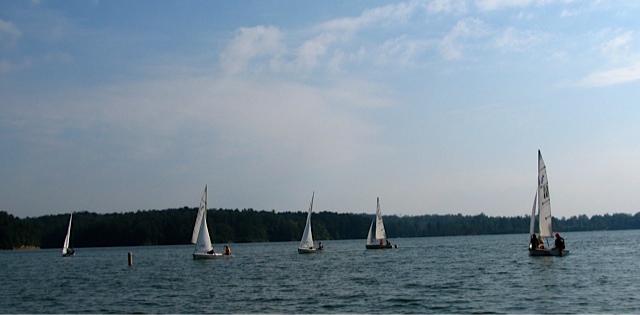
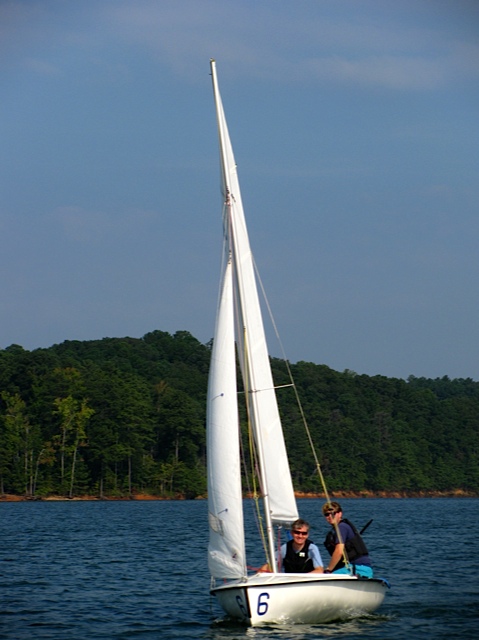 Problem is, I don’t really know how to sail. His are fairly big sailboats, and he could probably use the help of a non-idiot when he’s trying to get the thing to move under wind power. And so I decided I needed to learn something about sailing.
Problem is, I don’t really know how to sail. His are fairly big sailboats, and he could probably use the help of a non-idiot when he’s trying to get the thing to move under wind power. And so I decided I needed to learn something about sailing.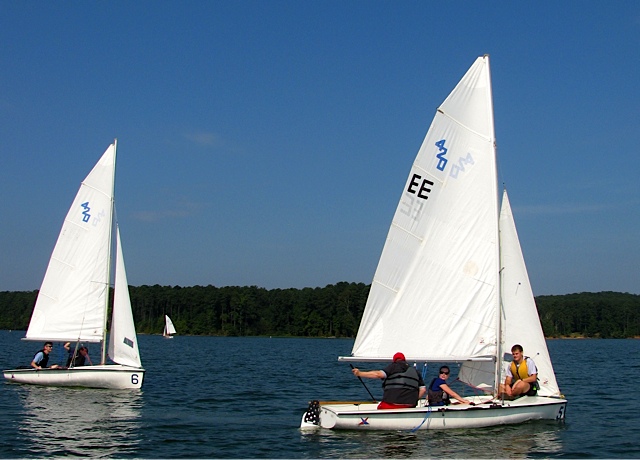 And so for five Saturdays in a row in August and September, I got up at 7:30am and drove up to Lake Allatoona for my weekly lesson. They have 6 small sailboats that they use for training, with each boat getting two students, so the class size maxes out at 12. The boats are called 420’s, named for the 4.20 meter length of the hull, and are a basic two-person boat with not too many different ropes for a beginner to learn to deal with.
And so for five Saturdays in a row in August and September, I got up at 7:30am and drove up to Lake Allatoona for my weekly lesson. They have 6 small sailboats that they use for training, with each boat getting two students, so the class size maxes out at 12. The boats are called 420’s, named for the 4.20 meter length of the hull, and are a basic two-person boat with not too many different ropes for a beginner to learn to deal with.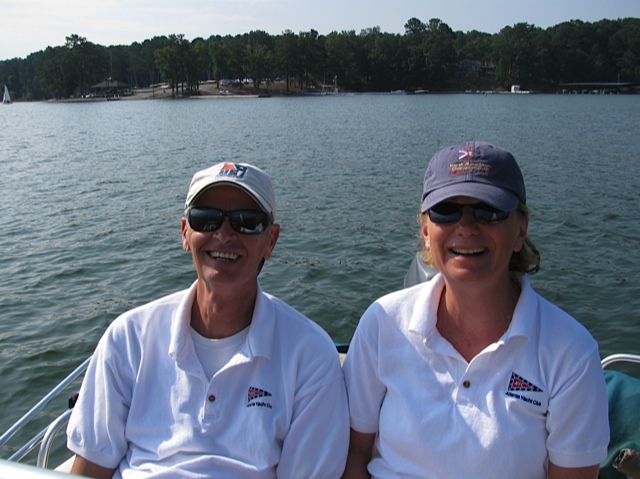 our teachers, Orren and Britt-Marie On the first day, they gave us maybe 60-90 minutes of introduction to the boats and sailing technique and then sent us out on the water in the boats. Fortunately there was almost zero wind so nothing too dramatic happened, meaning we had a chance to learn the parts of the boat and occasionally got a puff of wind to do something with.
our teachers, Orren and Britt-Marie On the first day, they gave us maybe 60-90 minutes of introduction to the boats and sailing technique and then sent us out on the water in the boats. Fortunately there was almost zero wind so nothing too dramatic happened, meaning we had a chance to learn the parts of the boat and occasionally got a puff of wind to do something with.  By the third week, though, we had a pretty good understanding of how to execute a tack, which is a basic turn into the wind. When you tack, you are changing from sailing with the wind coming from one side of the boat (e.g. port) to sailing with the wind coming from the other side (e.g. starboard). When sailing, you typically spent a lot of time doing tacks back and forrth, running a zig-zag pattern in the water, because that it how you get the boat to sail upwind.
By the third week, though, we had a pretty good understanding of how to execute a tack, which is a basic turn into the wind. When you tack, you are changing from sailing with the wind coming from one side of the boat (e.g. port) to sailing with the wind coming from the other side (e.g. starboard). When sailing, you typically spent a lot of time doing tacks back and forrth, running a zig-zag pattern in the water, because that it how you get the boat to sail upwind. And so now I know enough about sailing to not be a complete idiot on the Mediterranean next year. I’ll be on a bigger sailboat with much more mass, which should make it a lot less sensitive to our body positioning and more forgiving of mistakes. And the boom should be higher up, so I won’t get clobbered in the head. Most importantly, I won’t be in charge!
And so now I know enough about sailing to not be a complete idiot on the Mediterranean next year. I’ll be on a bigger sailboat with much more mass, which should make it a lot less sensitive to our body positioning and more forgiving of mistakes. And the boom should be higher up, so I won’t get clobbered in the head. Most importantly, I won’t be in charge!